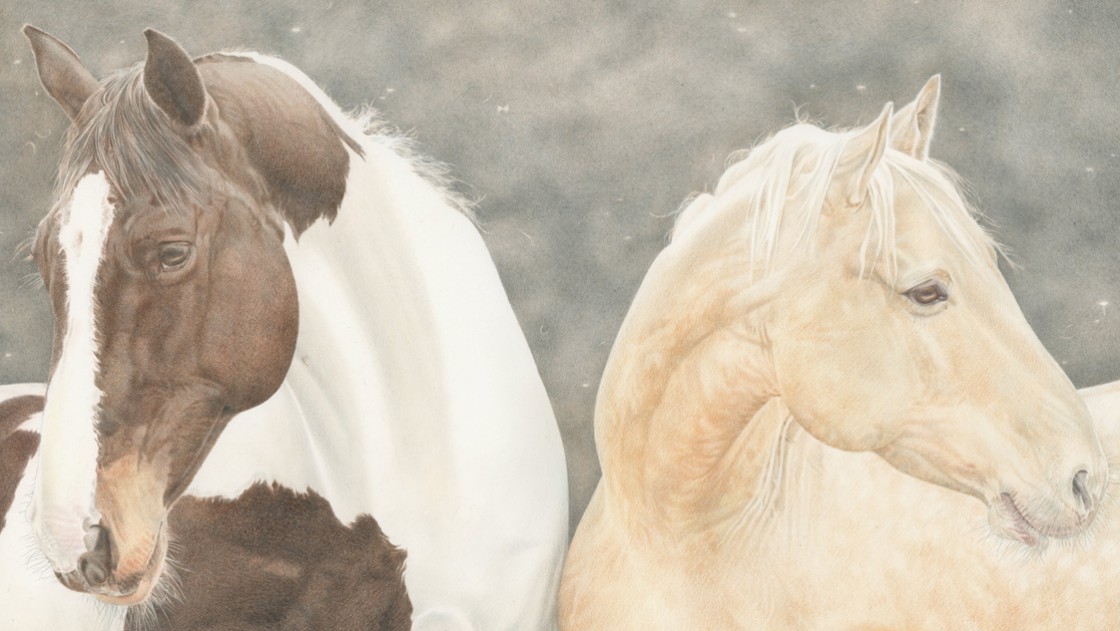The startle response of a horse is his involuntary reaction to the sudden appearance of an unexpected or unfamiliar stimulus.
Anyone with a horse has probably experienced the horse startling in some or all of these types of situation:
- When something suddenly comes into the environment or to the attention of the horse, such as a bird flying out from a bush, or a person whizzing past on a bicycle, or a judge passing a rosette to the rider
- When the horse is surprised by a sudden noise, such as the air brakes on a bus or truck, the clatter of hooves that are out of sight, fireworks, or a bird scarer going off
- When something with which the horse is familiar in one place, appears in a different place or position to normal, or moves differently to normal – a jacket or rug hanging over a wall or fence, a feed bucket blowing across a field in the wind
When a horse notices something like this at low strength – from a distance, at low “volume”, small in size, and when he is otherwise calm and relaxed, the startle response may be no more than a sudden shift of the attention of the horse towards whatever has distracted him. He might momentarily divert all of his attention to appraising whatever it is, he may turn around or approach it to have a better look, he may keep very still so as to listen.
Having performed whatever investigation he deems necessary to decide that it is benign, he might then return to whatever he was doing having filed that “something” in the box in his brain that is labeled “not to be worried about”.
At greater strength, or when the horse is already anxious or under stress, the startle may be followed fairly rapidly by freeze, or freeze then flight, or fight, or a bit of each – such as a horse freezing for a few moments before setting off in flight, kicking out behind him as he runs away.
The thing to remember about the startle is that it is involuntary. The horse cannot choose whether or not to startle at something that appears suddenly, any more than we can.
There are some horse trainers who advocate the use of correction – the addition of an aversive stimulus – to discourage what is sometimes called a loss of “focus” from horse.
But are horses really trying to “out-focus” us or challenge our leadership when they look at things that come up in the environment or that come suddenly to their attention?
It would appear not, because the startle response is a reflex – which means that it is a reaction that is not under the horse’s conscious control.
This is why it is described as an involuntary response. The horse cannot control his startle response any more than we can stop ourselves from blinking if something is squirted into our eye.
The lack of a startle response from a horse should actually be a cause of concern for horse owners. A horse that seems not to notice sudden or unexpected events could be suffering from injury or illness. Many horses that are unresponsive or seem oblivious to what is going on around them – so called “bomb-proof” horses – are in reality often in a depressed state of learned helplessness. This is where horses cease to respond to things that they might reasonably be expected to perceive as threats, having been subjected to unpredictable and inescapable or persistent aversive treatment.
The fact that the startle response is involuntary, makes the correction of startle behaviour by the addition of an aversive stimulus – a bump on the rein to bring the horse’s head back to the centre, or a tap with a stick, or even a half halt – a rather unfair and pointless intervention from the human, because a horse cannot choose whether or not to startle, any more than we can.
The horse does not have a choice. The startle is a reaction over which he has no control.
The best way to prevent a small startle escalating into a full-on flight response is preparation.
That would involve introducing the horse to very low strengths of different distractions, stimuli and situations in advance, at home or where we can carefully control the environment so as to avoid overexposing the horse.
